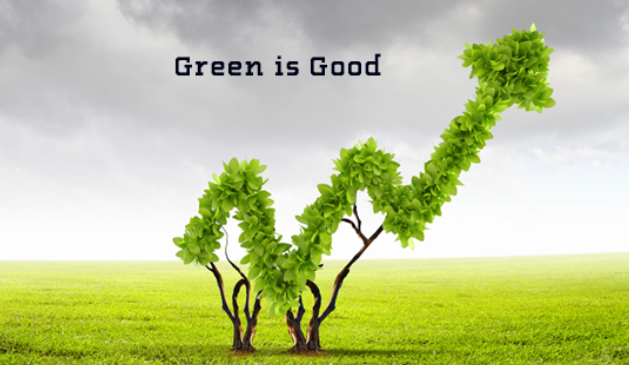Terms of trade go against farming after 2 years
- March 12, 2022
- 0
Though first advance estimates of national income project the farm sector to grow at a robust 3.9 per cent in FY22, how much of it is actually benefitting farmer’s remains questionable.
This is because the terms of trade in agriculture have started going against them again, after a gap of two years, due to higher inflation in the non-agriculture part of the economy.
The phrase ‘terms of trade’ for agriculture broadly refers to the gap between the price paid for inputs used in growing agricultural crops, and the prices received from the sale of those crops.
According to the national income estimate, the deflator in agriculture gross value added (GVA) is projected to grow by 5.2 per cent in FY22, while that in non-agriculture GVA, which largely consists of industry and services, is projected to grow at almost twice the rate, at 10 per cent.
The deflator measures the rate of change in prices or the inflation rate.
This broadly means that in the current financial year, farmers are paying a higher price for their inputs and other consumption items such as health and education of their wards, as compared to the price they receive on the sale of farm produce.
“An unfavourable terms of trade in agriculture basically shows that farmers are paying higher price for their inputs which includes diesel, fertilizes and also for consumption services such as health and education in comparison to the price that they receive by selling their produce,” said S Mahendra Dev, director and vice chancellor of Mumbai-based Indira Gandhi Institute of Development Research (IGIDR).
He said terms of trade have also reversed as core inflation (non-food and non-fuel) has risen at a faster rate as compared to the food inflation.
Dev said worsening terms of trade for agriculture, coupled with low rural wages, does not augur well for the larger rural economy as such and could delay the rural recovery.
Recovery in rural areas has been a matter of concern despite faster economic growth as highlighted by several indicators.
किसानो के लिए खेती एक बार फिर से घाटे का सौदा
राष्ट्रीय आय के पहले अग्रिम अनुमानों में दिखाया गया है कि चालू वित्त वर्ष में कृषि क्षेत्र 3.9 फीसदी की जबरदस्त वृद्धि दर्ज करेगा लेकिन यह प्रश्न बना हुआ है कि वास्तव में इससे किसानों को कितना फायदा होगा।
ऐसा इसलिए है कि अर्थव्यवस्था के गैर-कृषि हिस्से में उच्च मुद्रास्फीति के कारण दो वर्ष बाद दोबारा से खेती करना उनके लिए नुकसानदायाक साबित होने लगा है।
कृषि के लिए व्यापार की शर्तों से मोटे तौर पर आशय कृषि फसलों को उगाने में उपयोग किए जाने वाले इनपुटों के लिए भुगतान की गई कीमत और उन फसलों को बिक्री से मिले कीमतों के बीच के अंतर से है।
राष्ट्रीय आय अनुमान के मुताबिक वित्त वर्ष 2022 में कृषि सकल मूल्यवर्द्धन (जीपीए) में अपस्फीतिकारक 5.2 फीसदी बढ़ेगा जबकि गैर-कृषि जीवीए लगभग दोगुनी दर से 10 फीसदी बढ़ेगा। गैर-कृषि जीवीए में उद्योग और सेवाओं को शामिल किया जाता है।
अपस्फीतिकारक कीमतों में अंतर की दर या मुद्रास्फीति की दर की माप करता है।
व्यापक तौर पर इसका मतलब यह होता है कि चालू वित्त वर्ष में किसान अपने इनपुट और अपने बच्चों के स्वास्थ्य और शिक्षा जैसे अन्य खपत मदों के लिए अधिक कीमत का भुगतान कर रहे हैं जबकि इसके मुकाबले उन्हें कृषि उपज की बिक्री से कम कीमत प्राप्त हो रही है।
मुंबई स्थित इंदिरा गांधी इंस्टीट्यूट ऑफ डेवलपमेंट रिसर्च (आईजीआईडीआर) के निदेशक और कुलपति एस महेंद्र देव ने कहा, ‘कृषि में व्यापार के लिए प्रतिकूल शर्तें मूल रूप से दिखाती हैं कि किसान अपनी फसल बेचकर जो कीमत हासिल करते हैं उसके मुकाबले वे डीजल, उर्वरक सहित अपने इनपुट के साथ साथ स्वास्थ्य और शिक्षा जैसी खपत सेवाओं के लिए अधिक कीमत का भुगतान कर रहे हैं।
उन्होंने कहा कि व्यापार की शर्तें भी उलट गई हैं क्योंकि गैर खाद्य और गैर-ईंधन यानी की प्रमुख मुद्रास्फीति खाद्य मुद्रास्फीति के मुकाबले तेज गति से बढ़ी है।
देव ने कहा कि कृषि के लिए खराब हो रही व्यापार की शर्तों के साथ कम ग्रामीण मजदूरी बड़ी ग्रामीण अर्थव्यवस्था के लिए शुभ नहीं है क्योंकि इससे ग्रामीण रिकवरी में देरी हो सकती है।
विभिन्न संकेतकों में नजर आ रही तेज आर्थिक वृद्धि के बावजूद ग्रामीण इलाकों में रिकवरी एक चिंता की बात रही हैं।






























































